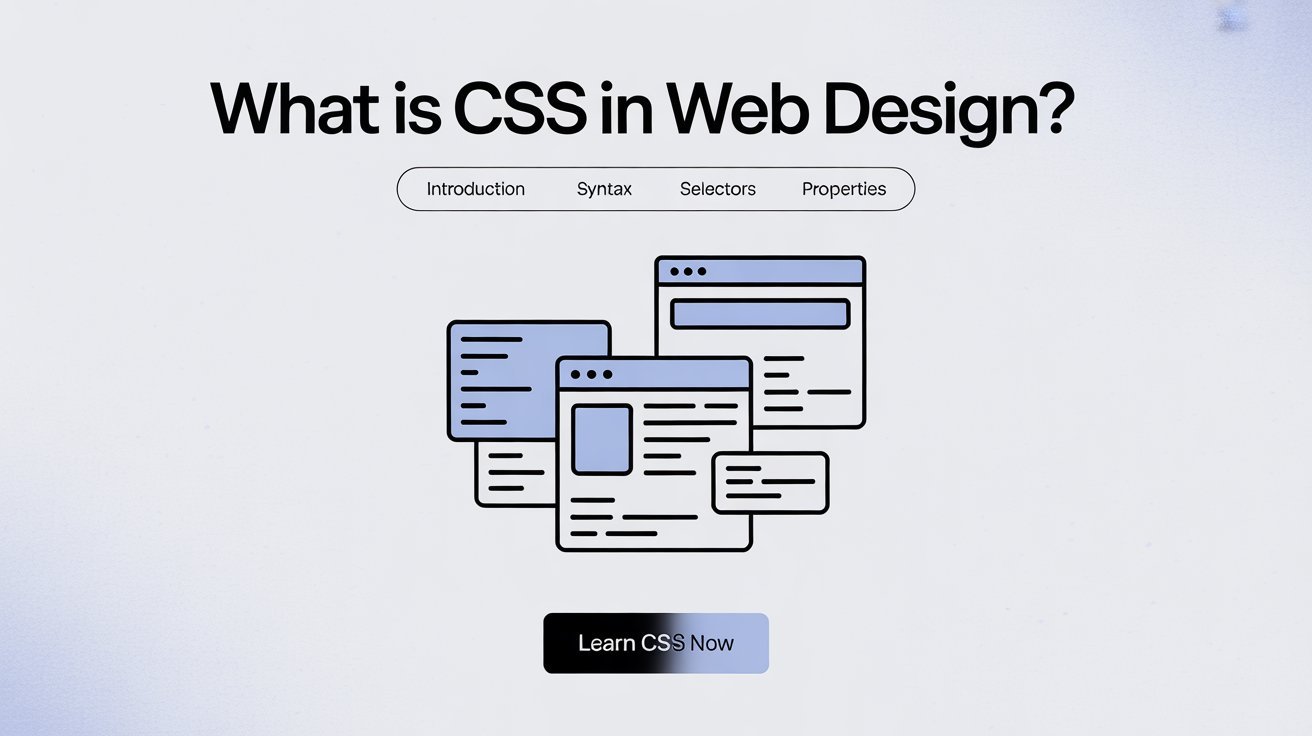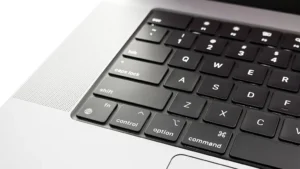What is CSS in web design? The short, simple, and easy explanation in English of what CSS in web design is, how it works, its advantages, basic features, and future trends.
One of the most asked questions by beginners who are new to the web development area is: “What is CSS?”. Keeping this in mind the authors have prepared this simple answer. CSS stands for Cascading Style Sheets, and it is a language that specifies the look and the ease of use of a website. Besides the text, CSS also caters to pictures and the overall appearance.
The Basics of CSS
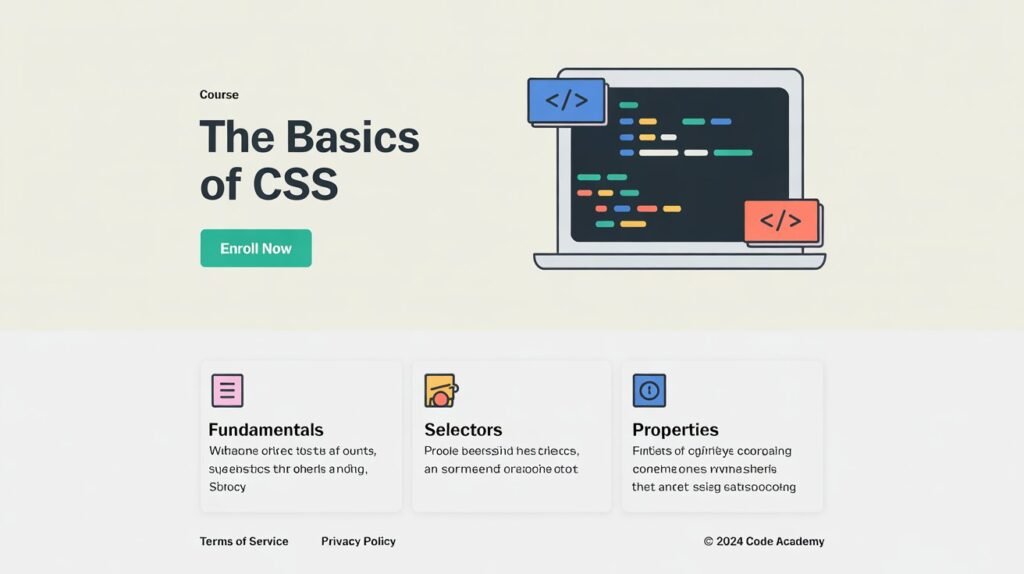
CSS is a style language that functions alongside HTML to create web pages. While HTML defines the framework, CSS is in charge of the styling. To illustrate, HTML would have the web page display text and pictures whereas CSS would style the page by setting its colors, fonts, and layouts. A comparison of HTML to the bricks of a house and CSS to the paint and decoration would be quite apt.
One fundamental feature is the CSS syntax. A CSS rule consists of a selector, property, and value. The selector identifies an element, the property describes the aspect to be changed, and the value specifies the change of the aspect. For instance:
Read More About : Why HTML is Important in Web Development
How CSS Works

How CSS functions is by associating style rules with HTML elements. When the browser opens a web page, it first checks the HTML. After that, it mixes CSS rules one after the other, from the top down, giving the latest or the most detailed a higher priority. This is called the cascade principle.
There are three different ways to write CSS. Inline CSS is done inside HTML tags. A style tag in the HTML head contains internal CSS. External CSS is a `.css` file that is separate from the HTML and is linked to it. Out of these, external CSS is the most suitable for big websites as it allows the code to be kept clean and reusable.
Key Features of CSS
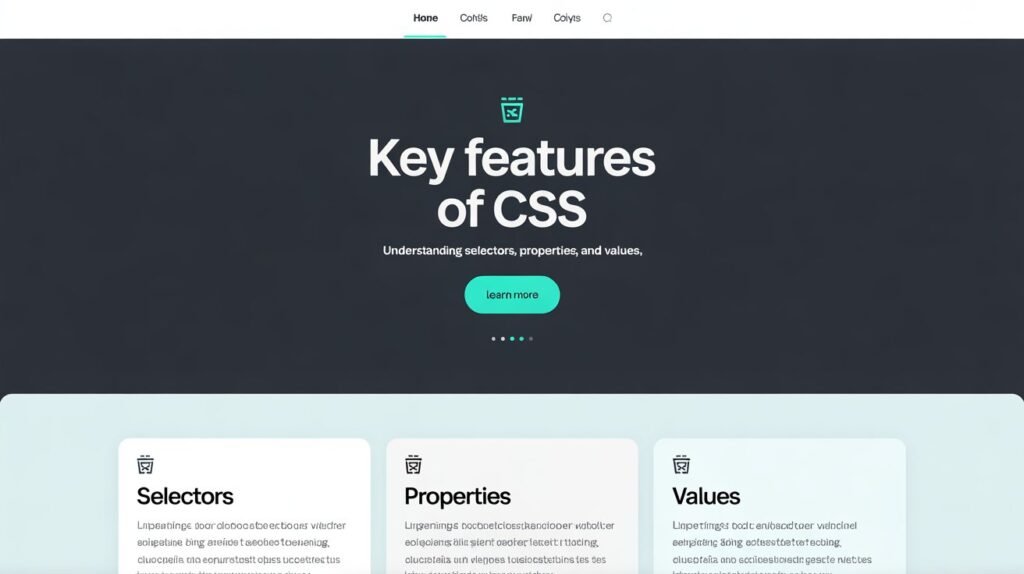
One key feature of CSS is the separation of content and design. Content remains in HTML, while CSS handles the layout. This setup makes websites easier to maintain. Changing one CSS file can update hundreds of pages.
Another feature is cross-browser support. CSS rules are created to work across different browsers, such as Chrome, Firefox, and Safari. While older browsers can sometimes cause issues, modern CSS is more dependable.
.
Types of CSS Selectors
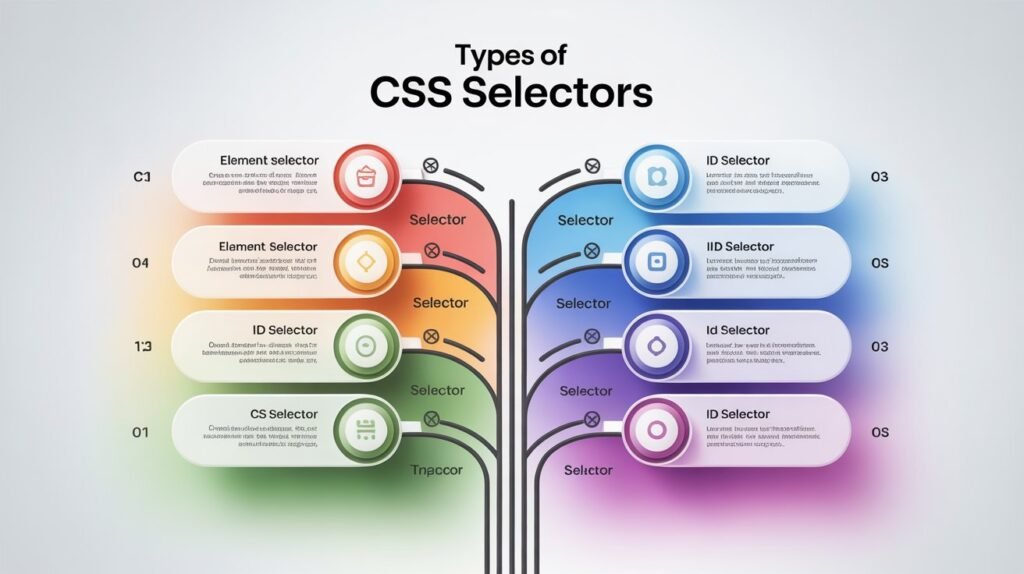
Selectors form the core of CSS. With them, you can reach out to an element which can be a particular type and set a style for it. The feature type selector is the most frequent one such as
Besides that, there are classes and ids. A class is always designated by a dot while an id is written with a hashtag. For example, `.intro defines the style for a class and main sets the style for a particular id. Attribute selectors and pseudo-classes alongside other advanced selectors are the ways of gaining complete control over hover effects and form styling.
Table: Common CSS Selectors
- Selector Example Use Case
- Element p { } Style all paragraphs
- Class box { } Style elements with class “box”
- ID header { } Style the element with id “header”
- Pseudo- class | a\:hover { } Style link on hover
- Attribute input type=text Style text input fields
Advanced CSS Concepts
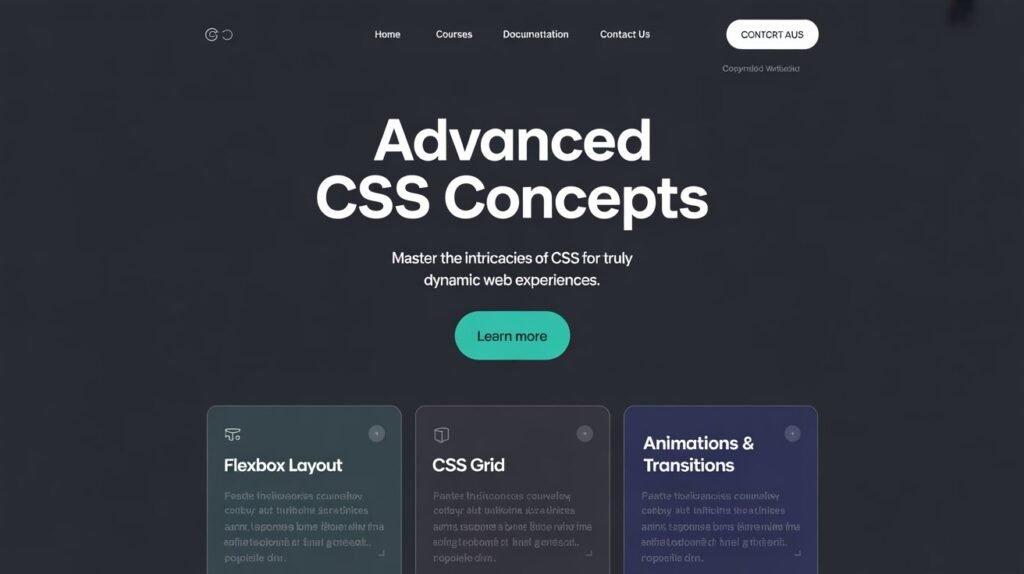
After you have mastered the fundamental skills of CSS, you are able to work your way through advanced CSS. One important idea is CSS Grid
Another more advanced concept is CSS animations and transitions. By these means the website visually communicates with the user via the animated interaction of such elements as buttons, menus, and backgrounds. For example, using CSS transitions a button can slowly change its color as the mouse pointer is moving over it.
Benefits of Using CSS in Web Design
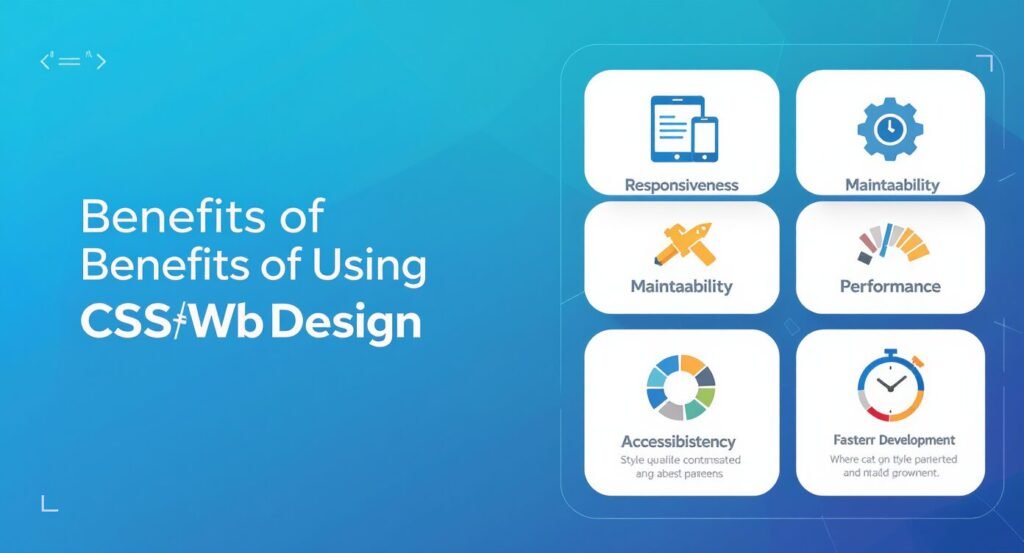
One of the most major advantages of CSS is consistency. With one CSS file, multiple pages can be styled. This way, the time needed for styling is cut down and the risks of errors are eliminated. If CSS was not available, developers would have to duplicate the style code for every page.
Additionally, CSS is a great tool for the user. What CSS does is it turns websites into responsive ones which is the ability to change displays automatically according to screen sizes. No matter that a design is viewed from a big desktop monitor or a small mobile screen, with CSS it will be visually pleasing everywhere.
Benefits of CSS
Benefit Explanation
Consistency One style file updates all pages
Efficiency Faster coding and less repetition
Responsive Design Adjusts layout for all devices
Accessibility Better readability for all users
SEO Friendly Cleaner code improves rankings
CSS vs. Other Styling Approaches
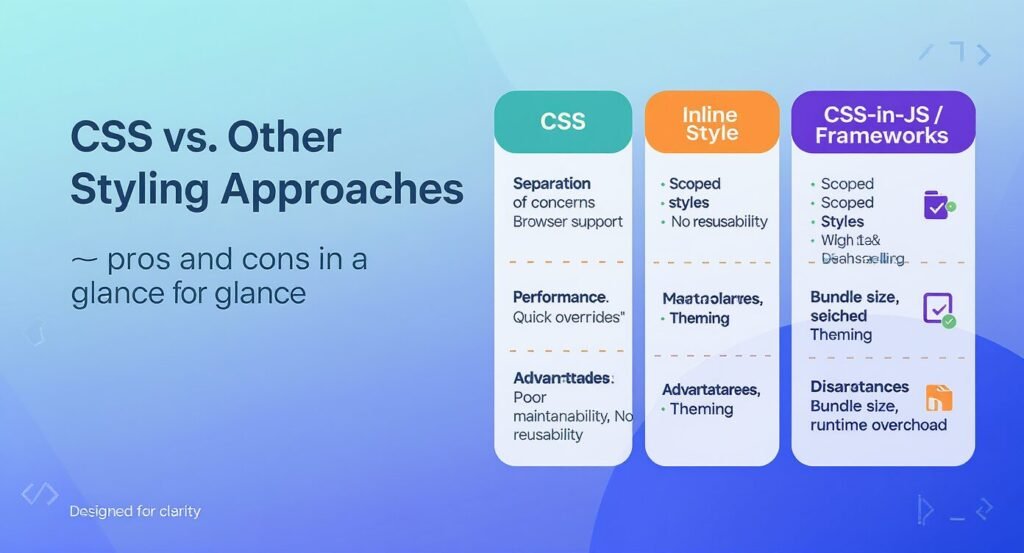
Before CSS, websites used HTML tags for styling, like `<font>` or `<center>`. This made code messy and hard to maintain. CSS replaced these outdated tags with cleaner rules.
Other approaches include inline styling with JavaScript. However, mixing design with logic makes code harder to read. CSS is better because it keeps design separate, allowing developers to focus only on styling without touching functionality.
you will like : Why CSS Is Important for Websites
Real-World Applications of CSS
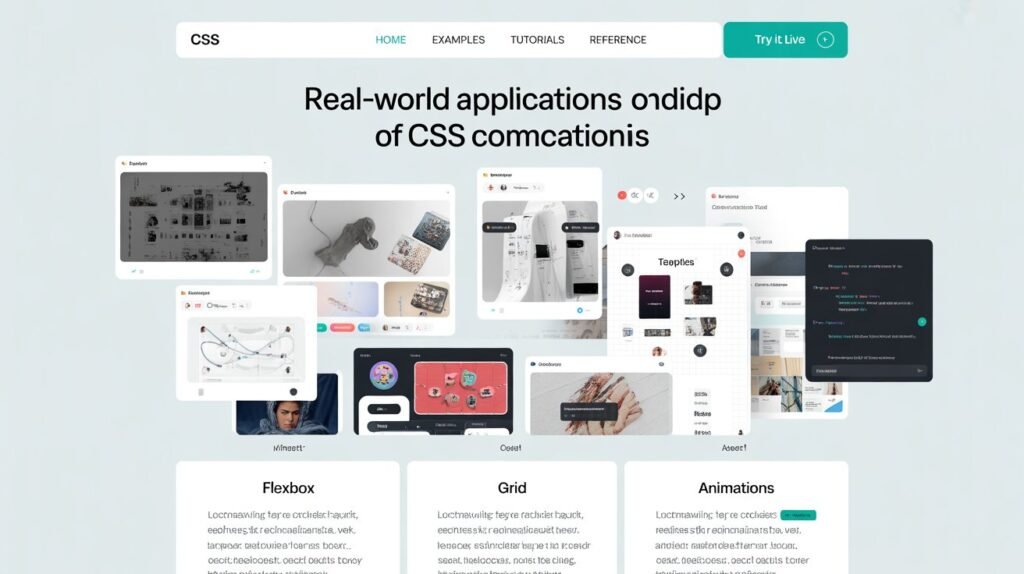
Almost all contemporary sites apply CSS. CSS controls the visual aspect of the site, whether it be a blog or an online store. In other words, Amazon implements CSS to present products in a visually appealing way whereas news websites use CSS to style headlines and articles.
Facebook is a very straightforward example of how a platform works through CSS. The social network uses CSS for the interface features such as icons and navigation as well as the news feed. If it were not for CSS, Facebook would be just a mixture of white and black letters with no particular organization or blue color.
Real-World CSS Uses
Website Type CSS Application
E-commerce Product display, grids, checkout pages
Blogs Typography, post layouts
Social Media Buttons, feeds, navigation
News Sites Headlines, image placement
Portfolios Animations, project showcase
The Future of CSS

CSS keeps changing its ways. A trend in the near future is CSS variables, which give developers the ability to use the same values throughout a project. Such an operation greatly eases the managing of themes and colors.
Besides that, there are also CSS nesting and new layout features like subgrid. These changes will lower the amount of code needed and enable more versatile layouts. With constant browser updates, CSS will not only grow more complex, but also more essential in web design.
FAQs
What is CSS in simple words?
CSS is the language that makes websites look good. It controls colors, fonts, and layouts.
Why is CSS important in web design?
CSS is important because it separates design from content and makes sites responsive and user-friendly.
What are the three types of CSS?
The three types are inline CSS, internal CSS, and external CSS. External CSS is the most common for large sites.
Can a website work without CSS?
Yes, but it will look plain and boring. CSS adds beauty and style to web pages.
Is CSS hard to learn?
No, CSS is easier than programming languages. With practice, beginners can learn it quickly.
Conclusion
A simple answer to the question of what CSS is in web design is given in brief.CSS is the lifeblood of websites. It specifies the colors, the sizes, and the layouts, thus making the websites to visually present the companies in a professional manner. CSS is omnipresent, spanning from little blogs to vast platforms.It is not always the dark horse that has a brilliant future ahead of it, but Flinto is definitely one of those cases, as it keeps bringing with it new features that make design easier and more convenient for your use.

